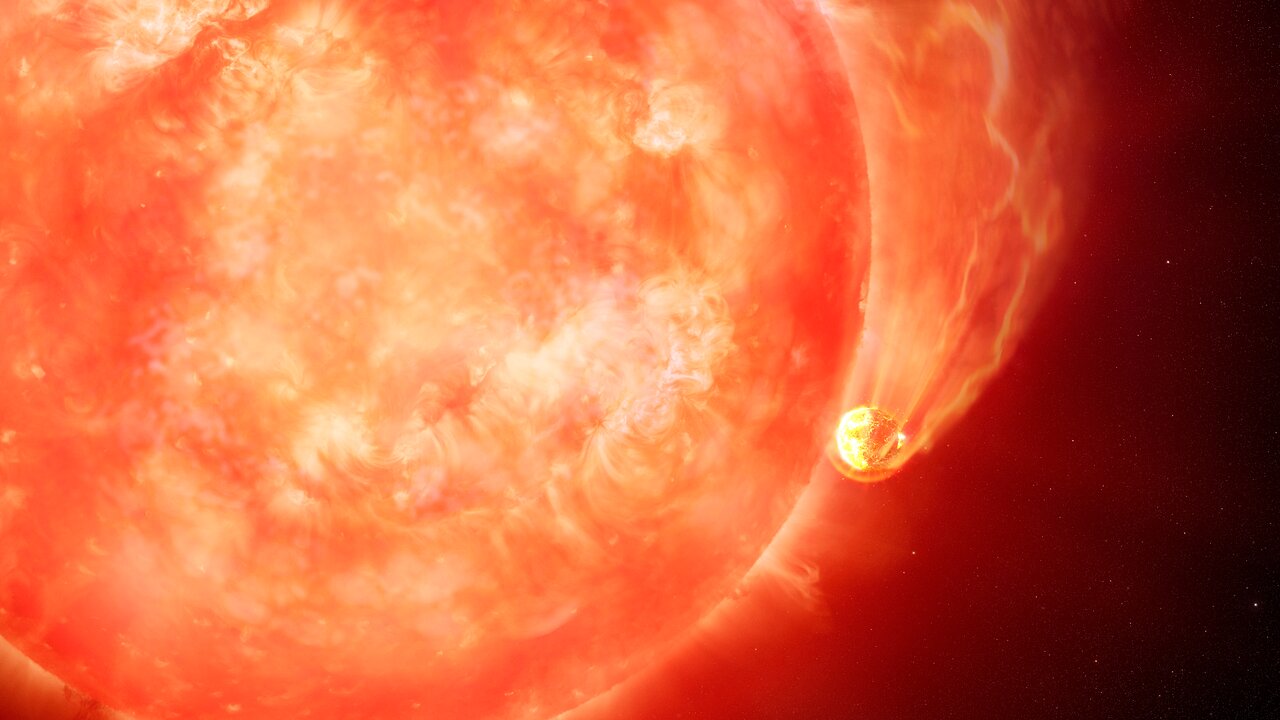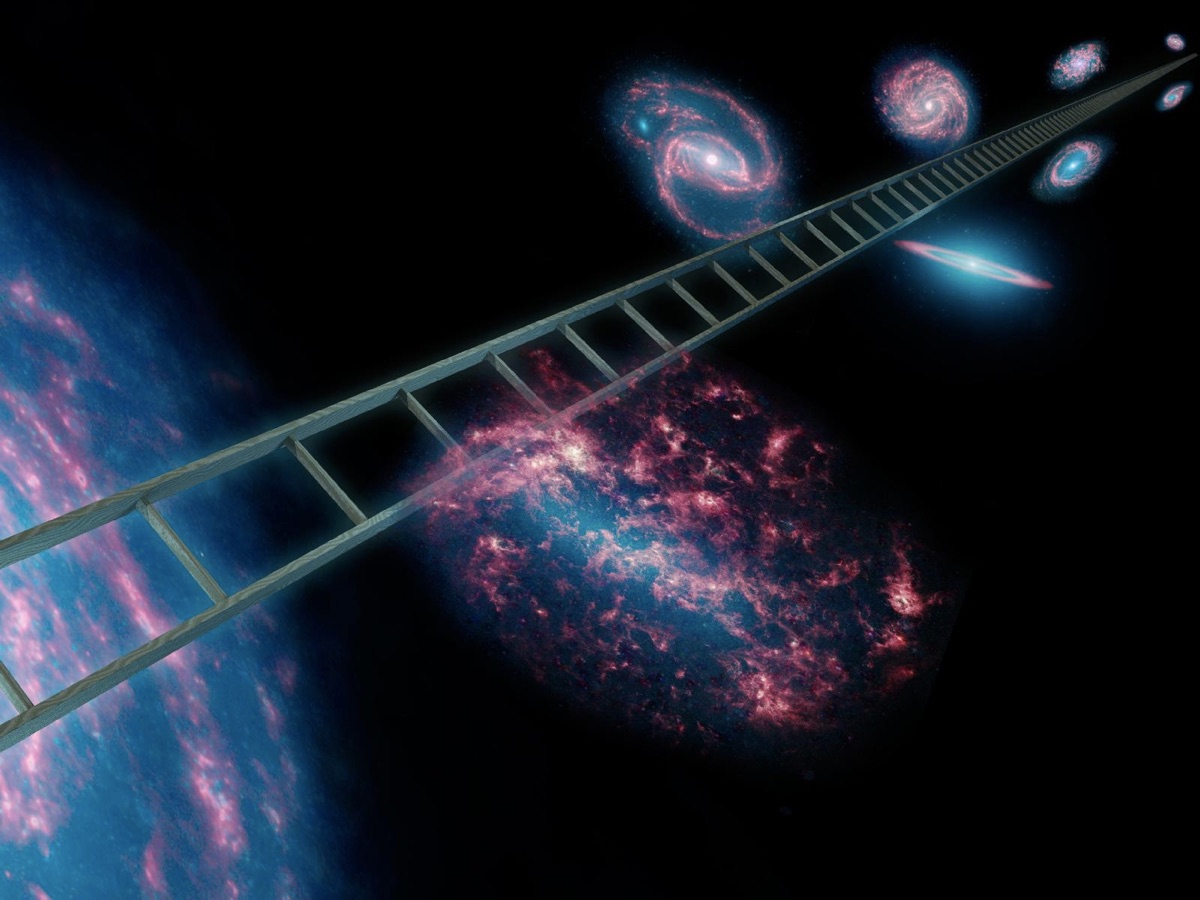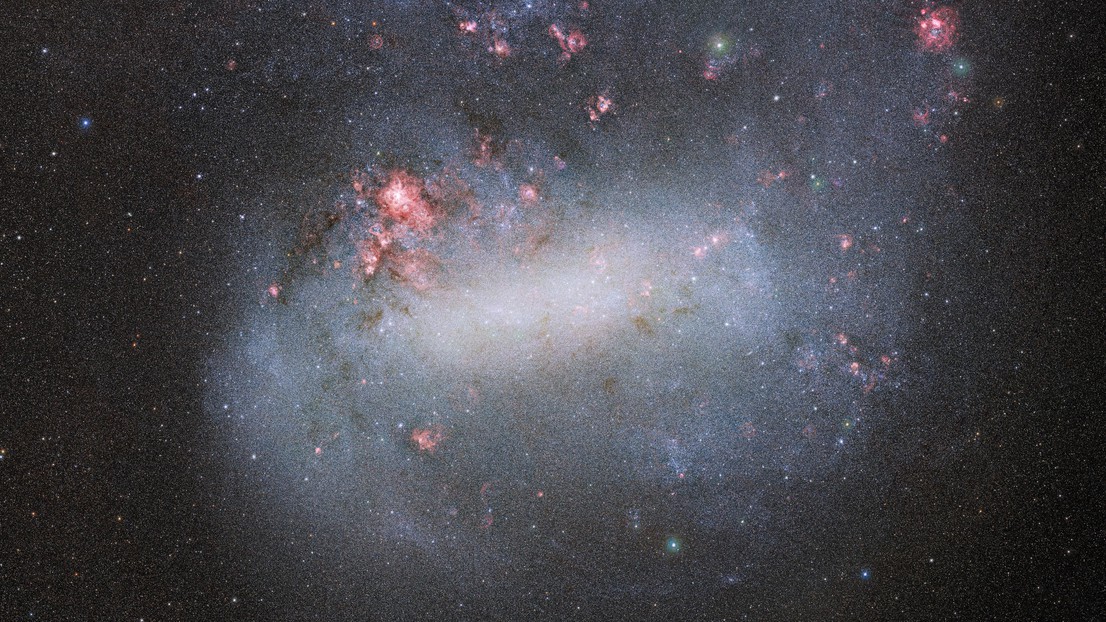'Singing' red giant stars could offer another way to measure the universe's expansion
The cosmic distance ladder could soon have another rung.

In around 5 billion years, the sun will run out of the fuel needed for nuclear fusion in its core. This will cause its inner core to collapse under the force of the sun's own gravity. At this point, the star's outer layers (where nuclear fusion is still happening) will swell out, and it will enter a stage of stellar life called the red giant phase.
This red giant phase will signal destruction for inner solar system planets, including Earth. Other stars in the universe will experience the same fate as our sun, meaning any exoplanets orbiting close to those other stars will also face such destruction.
Yet, astronomers may have now hit upon a way that the destructive red giant phase of stars can be used constructively.
A team of researchers led by EPFL scientist Richard I. Anderson has suggested that the acoustic oscillations, or "singing," of red giants at different ages can be used to more precisely measure cosmic distances. Just as music is said to soothe the savage beast, this celestial melody could help solve a savage cosmological problem called "Hubble tension."
Related: James Webb Space Telescope complicates expanding universe paradox by checking Hubble's work
"We found that the acoustic oscillations of red giant stars tell us how to best measure cosmic distances using the Tip of the Red Giant Branch method," Anderson said in a statement.
Anderson is referring to the position, or "branch," that red giants occupy on a chart that outlines stellar lives called the Hertzsprung-Russell diagram (HR diagram). The "Tip of the Red Giant Branch (TRGB)" is a critical point where the cores of red giant stars have collapsed, becoming dense enough to ignite helium and reverse their brightening.
Get the Space.com Newsletter
Breaking space news, the latest updates on rocket launches, skywatching events and more!
A new rung on the cosmic distance ladder
Astronomers have a variety of ways to measure vast cosmological distances; such methods are useful for mapping progressively larger distances. These measurement techniques come together to form the metaphorical rungs of the "cosmic distance ladder," more formally known as the "extragalactic distance scale."
Rung one, if you will, is built with the use of stellar parallax — the change in apparent positions of distant stars as Earth changes position around the sun. This technique can measure distances extending just beyond the solar system.
The highest rung on the ladder is studied by analyzing the redshifts of distant galaxies. This technique can be used to measure distances across of billions of light-years, by contrast.
Redshift occurs because, as objects race away from us due to the expansion of the universe, the light they emit that takes billions of years to travel to us has its wavelength stretched by this expansion. That lengthening reddens the light and even causes it to move to infrared wavelengths sometimes. This is actually why the James Webb Space Telescope (JWST), which is highly sensitive to infrared light, is so adept and seeing galaxies in the early universe.
The cosmic distance ladder can help cosmologists measure the rate at which the universe is expanding, a value called the Hubble constant, named in honor of astronomer Edwin Hubble. This is because his observations of distant galaxies were key in overturning the idea that the universe exists in a steady state, neither growing nor shrinking.
There is a fly in this cosmological ointment, however.
The different measurement techniques of the cosmic distance ladder don't agree with each other on the value of the Hubble constant. This problem has become known as the "Hubble tension," and scientists think adding extra rungs to the cosmic distance ladder could help resolve it.

The TRGB can be used as a distance measurement because of the mostly uniform light output seen at this point in red giant evolution. This means red giants at different distances can have their brightnesses compared, thus offering a measurement of the distances between them. This makes red giants at the TRGB point of the HR diagram something that astronomers call a "standard candle."
Hubble trouble solved by stars that boil and bubble?
To investigate the use of red giants as standard candles, Anderson and the team turned to data from the Optical Gravitational Lensing Experiment (OGLE) and the Gaia mission to study red giants in a satellite galaxy of the Milky Way: The Large Magellanic Cloud (LMC).
This resulted in a surprise discovery that TRGB stars vary in brightness periodically. This variation is caused by sound waves traveling through the swollen stars, similar to how earthquakes travel through Earth. Such variations cause the stars to oscillate.

While astronomers were already aware of these red dwarf oscillations, the oscillations' influence on brightness and distance measurements hadn't been considered before.
The oscillations ultimately allowed the team to determine the age of the red giants, and that should add nuance to their use as standard candles.
"Younger red giant stars near the TRGB are a little less bright than their older cousins, and the acoustic oscillations that we observe as brightness fluctuations allow us to understand which type of star we're dealing with," Anderson said. "The older stars oscillate at a lower frequency — just like a baritone sings with a deeper voice than a tenor!"
Because red giants are ubiquitous in galaxies across the universe, this development could help deliver more accurate cosmic distance measurements. Could it someday help alleviate the Hubble tension?
"Now that we can distinguish the ages of the Red Giants that make up the TRGB, we will be able to further improve the Hubble constant measurement based thereon," Anderson concluded. “Such improvements will further put the Hubble constant tension to the test and may lead to groundbreaking new insights into the basic physical processes that decide how the universe evolves."
The team's research was published on March 7 in The Astrophysical Journal Letters.
Join our Space Forums to keep talking space on the latest missions, night sky and more! And if you have a news tip, correction or comment, let us know at: community@space.com.

Robert Lea is a science journalist in the U.K. whose articles have been published in Physics World, New Scientist, Astronomy Magazine, All About Space, Newsweek and ZME Science. He also writes about science communication for Elsevier and the European Journal of Physics. Rob holds a bachelor of science degree in physics and astronomy from the U.K.’s Open University. Follow him on Twitter @sciencef1rst.










